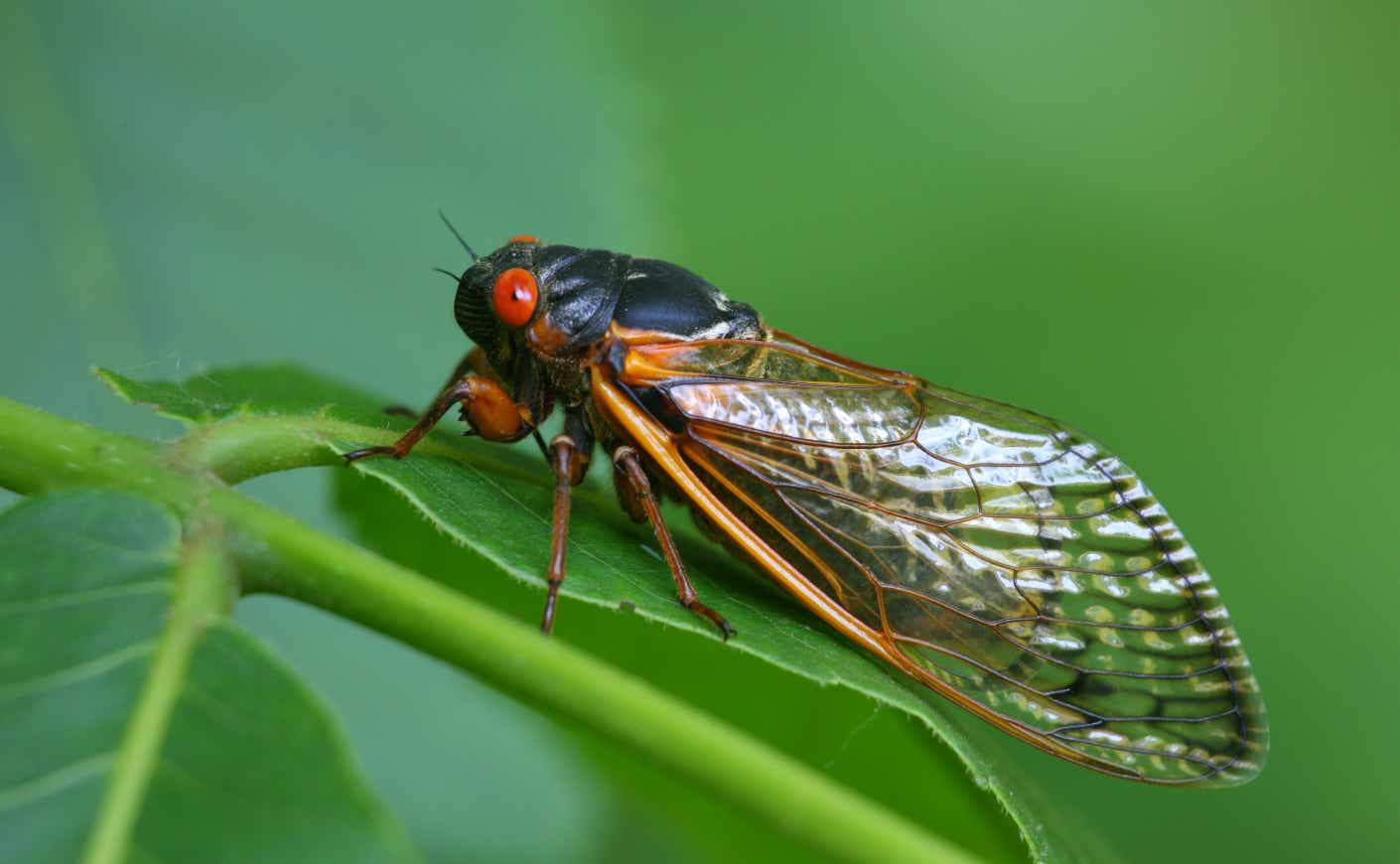If you hate bugs, then you might want to brace yourself: Two rare breeds of cicadas are expected to emerge in the billions, if not trillions.
As unsettling as this event may sound, researchers say it marks the first time in over 200 years that Brood XIX (or the Great Southern Brood) and Brood XIII (or the Northern Illinois Brood), will crawl out of the ground at the same time. To put this into perspective, the last time these two broods came out together was in 1803 — when Thomas Jefferson was president and forecasts show that they’re not expected to make another appearance together for another 221 years. “It’s just a statistical anomaly, like Halley’s Comet,” Tulane University professor Keith Clay told ABC about the co-emergence.
While they’re perfectly harmless to humans and animals, around 5 percent of the Brood XIX — dubbed “zombie cicadas” — will carry a fungus that spreads like an STD and makes them mate until their genitals fall off. While that might sound like much, it’s a lot considering the number of cicadas that are expected to appear en masse.
Wondering if your area will be affected by the phenomenon that experts have already dubbed “cicada-geddon?” Here’s a closer look at when you can expect them — and where they’ll be popping up.
When are the cicadas coming out?
This year’s cicadas are expected to start emerging in late April or early May. These insects, which typically live anywhere from 2 to 17 years, spend most of their lives underground feeding off of tree roots—and when they do emerge every 10 years or so, they typically do so in mass numbers. Scientists believe this is a survival tactic in case they’re preyed upon by other animals.
Experts say the timing of their highly anticipated emergence will depend a lot on the temperature. For instance, retired biology professor Gene Kritsky told The New York Times that the topsoil needs to be at least 64 degrees Fahrenheit.
Once the conditions are just right, the cicadas tunnel their way out from the earth, where they’ll molt and mate. Male cicadas typically look for a partner by making a humming sound — and the hotter the day, the louder they’ll be. This sound can collectively reach as high as 100 decibels, which is equivalent to a low-flying plane or lawn mower starting up. This spring, in particular, could be especially noisy: Experts warn that some of the “zombie cicadas” will be hyper-sexual (and vocal).
Where will they appear?
The cicadas are expected to pop up in at least 16 states across the Midwest and Southeast. Brood XIX will emerge in Louisiana, Arkansas, Alabama, Mississippi, Georgia, Tennessee, North Carolina, South Carolina, Kentucky, Virginia, and Missouri.
Meanwhile, Brood XIII will take up a smaller region, from Wisconsin to parts of Iowa, Indiana, and Michigan. Based on where the different broods have been observed, they may overlap in a portion of Illinois and Virginia, so you might want to avoid those areas if you can.
All in all, experts believe the dual emergence to last for about six weeks.
Are cicadas harmful?
Cicadas aren’t generally considered venomous or poisonous. They also don’t bite or sting, so you shouldn’t be afraid of getting bitten as you would with a mosquito.
But if you have a pet, it’s best not to let them gorge themselves on the insects because vets say this can lead to digestive issues. “A few ingested likely will be harmless, but we always worry about the quantity ingested over a short period of time,” Dr. Nita Vasudevan told NPR.
Are cicadas edible?
Cicadas are generally safe to eat, and like other bugs, they’re packed with protein. That said, the Food and Drug Administration warns that people with seafood allergies should steer clear of them because they “share a family relation to shrimp and lobsters.”
If you don’t have any allergic to them, experts say young cicadas, called tenerals, are best to eat in particular because they’re still tender and their bodies haven’t hardened yet. Their nutty flavor also lends them to a wide variety of dishes, including everything from dumplings to banana bread. But it’s best if you find them at a reputable store rather than catching one out in the wild because those could be potentially toxic.
While eating bugs isn’t exactly common here in the U.S., insects are considered a staple and even a delicacy in other parts of the world, including Australia and Thailand. In fact, the Food and Agriculture Organization of the United Nations estimates that two billion people eat bugs as part of their standard diet. Just some food for thought!









